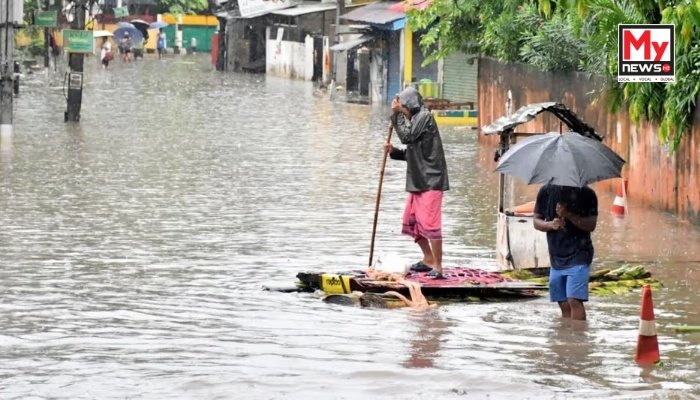Assam’s Riverine Crisis Deepens: Two Rivers Flow Above Danger Mark, More Under Threat
Guwahati– The flood situation across Assam has taken a serious turn, with the Dhansiri (South) and Dikhow rivers now flowing above their danger levels, placing districts of Golaghat and Sivasagar in a precarious position. The Central Water Commission’s (CWC) latest bulletin, issued today, categorises these areas under ‘severe flood’, a classification that signals alarming water levels, albeit still below their historical peaks.
In Numaligarh, Golaghat district, the Dhansiri (South) river recorded a height of 78.81 metres, significantly exceeding its danger threshold of 78.42 metres. Concurrently, the Dikhow river in Sivasagar district registered 92.57 metres, crossing its danger level of 92.4 metres. Both rivers are witnessing a continuous ascent, with the Dhansiri rising at a rate of 20 mm per hour and the Dikhow at a more rapid 110 mm per hour, prompting concerns among local authorities and residents.
Beyond these immediate severe threats, Assam is also grappling with potential flood situations at six other locations, which the CWC has flagged under the ‘above normal flood’ category. This includes critical waterways like the Barak at Annapurna Ghat in Cachar and the mighty Brahmaputra at Neamatighat in Jorhat, where water levels have already surpassed warning marks and are inching closer to the danger levels.
The CWC’s nationwide flood monitoring reveals that 14 sites across India are currently above the warning level. Of these, 12 sites fall into the ‘above normal’ category, spread across states such as Bihar, Madhya Pradesh, Uttar Pradesh, and West Bengal, indicating a widespread impact of the ongoing monsoon.
A significant point of concern is the reservoir inflows, with 25 sites across 11 states reporting water inflows beyond their threshold limits. Major reservoirs in Andhra Pradesh, Karnataka, and Odisha are particularly under watch. In Madhya Pradesh, the Bargi reservoir on the Narmada river recorded a substantial inflow rate of 6,948 cubic metres per second (cumecs), while the P D Jurala dam in Telangana also experienced considerable inflows at 3,400 cumecs.
The CWC continues its vigilant monitoring of these sites, emphasising the potential for further exacerbation of flood conditions. Residents in affected and vulnerable areas are strongly advised to remain updated through official channels and be prepared to initiate emergency measures as river levels continue to be dynamic and unpredictable.
Read More: Sikkim BJP Chief Dr. Thapa Pushes for Monsoon Road Safety and Gangtok Ring Road with NHIDCL

